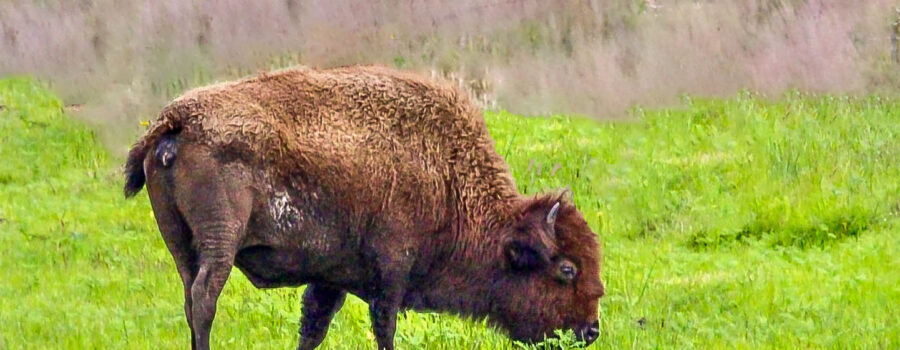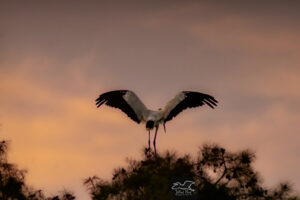American Bison are an Unusual Find in Central Florida

One of the most unusual animals you can see here in Central Florida are a wild herd of American bison (Bison bison). They live out on the prairie area on Payne’s Prairie and roam wild along with a herd of Mexican wild horses. Last week, after a long day of birding, I took one more hike out on the prairie and came across this small group of bison as they grazed. Bison are not native in Florida, but a small group was brought to Payne’s Prairie when the area was turned from private property to state owned land. The bison were used to help to rewild the area. The herd, which started out as 10 individuals, has grown to about 125 over the years. The natural range for American bison at this time in history is spotty and is primarily in national parks, most notably, Yellowstone National Park. Before the species was hunted to less than 500 individuals in the 1870’s their range spread across much of North America including Alaska, much of Canada, northern Mexico and much of the United States including very northern Florida.

Bison normally inhabit open areas, mainly grassy plains or prairies, but they can also be found in lightly forested areas and forest edges. They are migratory and tend to travel based on where the most abundant food is. When grasses or sedges are scarce, bison can also be browsers, eating tree leaves, buds, lichens, and mosses. The females tend to travel in herds with their calves and sometimes some older adult males. Calves usually stay with the herd until approximately three years old. After that, males will either live alone or in small bachelor herds. Breeding season is usually between August and September with calves being born in mid summer the following year. Calves will nurse for about a year or until the next calf is born.

Although bison appear to be peaceful animals, they will defend themselves, their calves, and their herd if threatened or harassed. Despite their large size, they can easily outrun a human being and have been known to cause injuries from minor cuts and bruises up to and including death. Each year in Yellowstone National Park, bison cause more injuries to people than bears do. Like any other wild animal, bison should always be treated with respect and care and should not be approached too closely.




Recent Comments